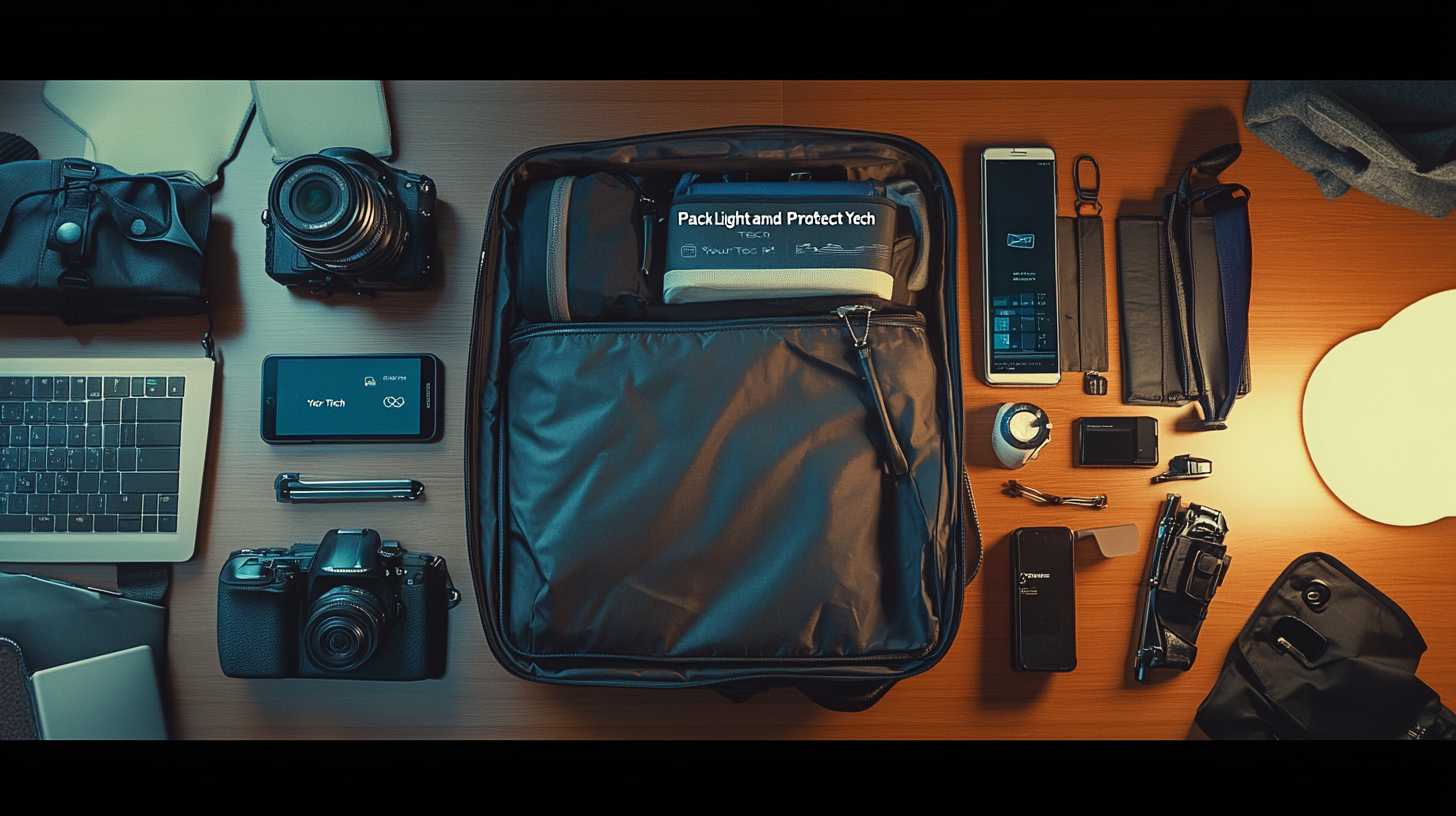Mastering Corporate Travel: 9 Expert Tips for Savvy Flyers

Every year, around 405 million long-distance business trips take flight, and as of 2025, corporate travel has nearly bounced back to its pre-2019 pace. In my own experience, there’s never been a more opportune moment to refine how we approach travel logistics, from snagging the best deals to using tech-driven solutions that streamline the entire process. I relish uncovering new approaches to booking, managing expenses, and staying sane in the often-chaotic world of corporate travel. Below, you’ll find nine thoroughly researched strategies to help ensure each business trip runs like clockwork.
1. Embrace a Corporate Travel Management Tool

I’ve come across an interesting statistic: nearly half of travel managers report increased stress due to clunky, manual booking methods and escalating costs. In my observations, platforms like Itilite or Velocity.travel not only remove repetitive tasks but also guarantee that every step—approval workflows, expense monitoring, and booking confirmations—flows seamlessly. Consider them as comprehensive dashboards where you can observe your entire itinerary, from flight reservations to project codes for expense tracking.
According to a 2024 Corporate Travel Manager Survey, companies using management tools saved an average of 18% on yearly travel costs. I’ve personally seen how these apps offer perks like early-booking discounts and real-time notifications if prices change. It’s all about making the booking stage more sophisticated and less error-prone. Plus, these modern platforms often sync with your smartphone to give you VR or AR previews of your hotel room or meeting space, allowing you to avoid surprises upon arrival.
Beyond convenience and cost savings, I’ve found that travel management tools foster transparency. Everyone from senior leadership to finance sees exactly where the money is going, which encourages trust and better collaboration across departments. It also eliminates the guesswork for employees who aren’t sure which flights or hotels fall under corporate guidelines. By automating these elements, a travel management system frees you to focus on the actual business at hand, whether it’s a crucial client pitch or a much-anticipated conference.
2. Clarify Policies and Approvals Early

I’ve learned that not understanding your corporation’s travel policy ahead of time is a recipe for headaches, especially when it comes to reimbursements. In one recent industry poll, roughly 40% of business travelers admitted they had overlooked key expense rules, leading to frustration and extra paperwork. By clarifying what’s acceptable before booking, you can sidestep last-minute scrambles that delay approvals and ramp up stress.
From my perspective, consistency in applying these protocols is everything. It lets you know exactly how to budget for meals, flights, and lodging, and ensures you stay well within limits. Consistent practices also instill confidence: I can plan worry-free, knowing I’m not going to be held up by ambiguous rules. Clear travel policies mean fewer unpleasant surprises on the road, which is essential when you’re juggling time zones and tight schedules.
I highly recommend setting up a quick reference guide for travelers. This could be a shareable online document with at-a-glance sections discussing per diem amounts, allowable accommodation types, or any required next-day approvals. Everyone involved—from first-time travelers to seasoned veterans—will appreciate having an easy resource that prevents misunderstandings before they occur.
3. Book Early and Use Real-Time Alerts

I’ve noticed that timing really is everything in corporate travel. Booking flights during off-peak periods can make a noticeable dent in ticket prices. In my own schedule, I’ll set calendar reminders to snag flights several weeks in advance, which aligns with findings by the Global Business Travel Association indicating that booking 21 days prior can save up to 20% on airfare.
But timing isn’t just about saving money; it’s also about peace of mind. Real-time alerts on your phone or email can be the difference between catching a flight seamlessly or sprinting through the airport. For instance, I once received a push notification about a sudden delay just in time to rebook a connecting flight and avoid an unexpected overnight layover. Act quickly when you see these alerts—often, the best alternative flights fill up within minutes.
Another trick I’ve adopted: set up route-specific notifications. If your company has frequent trips to, say, Chicago or Hong Kong, real-time alerts tailored to those destinations ensure you get priority updates if a fare drops or if seats are selling out fast. The added visibility helps reduce stress and keeps you a step ahead of any itinerary changes.
4. Pack Light and Protect Your Tech

When it comes to packing, I’m a minimalist at heart. A single carry-on can spare you from baggage fees and the anxiety of waiting at the carousel. Beyond those practical benefits, traveling light helps you think on your feet if you need to move quickly between gates or pivot to an earlier flight. I usually include a small first-aid kit, a compact outfit change, and essential toiletries for quick refreshers between meetings.
Given my fascination with technology and data security, I’ve made it a priority to protect devices. Noise-canceling headphones keep me focused on urgent work, while a power bank ensures I never lose battery at critical moments. Most importantly, I rely on a secure VPN to safeguard my data, particularly when connecting to random Wi-Fi hotspots. According to cybersecurity analysts, roughly 75% of public networks lack robust security, so a VPN really is non-negotiable.
I also recommend two-factor authentication on all critical travel apps, from airline portals to expense trackers. This extra layer prevents unauthorized access, especially if you’re using shared or public computers during your trip. In the end, safeguarding your gear is about ensuring your work—and your peace of mind—remains intact wherever you go.
5. Expedite Security with TSA PreCheck and Global Entry

In my travels across multiple continents, I’ve seen that frequent business flyers crave consistency most of all. That’s where programs like TSA PreCheck (for domestic U.S. flights) and Global Entry (for international arrivals) come in. A recent study suggests these expedited security options save up to 10 minutes per checkpoint on average, though I’ve personally saved upwards of 30 minutes during busy seasons.
I consider the application fees for these programs an investment in stress-free travel. I get to keep my shoes on and my laptop in the bag, which helps me focus on more pressing tasks. Many credit card programs even reimburse these fees, aligning well with corporate budgets and personal convenience.
To make the most of it, I schedule my appointments or renewals well in advance, especially before big conferences or peak holiday months. Consistency at the security line can make or break a business trip. When you’re up against tight schedules, every minute you save in line is another minute you can spend tackling important tasks (or simply catching your breath).
6. Leverage Loyalty Programs and Lounge Memberships

Back when I started traveling for work, I underestimated the value of loyalty programs. Today, I see them as a savvy way to earn perks—free flights, upgrades, or even extended lounge passes. According to industry data, flyers who consistently stick to a single loyalty program can accrue enough points within a year to offset major costs on subsequent trips.
Personally, I aim to partner with airlines and hotel chains that align with my usual travel routes. Sometimes, your company’s travel policy might restrict certain carriers, but there are usually multi-brand alliances that let you pool points in flexible ways. I’ve seen colleagues redeem miles for lounge access, which in turn boosts productivity during extended layovers, helping them hold surprise conference calls and handle urgent tasks in a quieter setting than the main terminal.
My tip for maximizing these programs: read the fine print. Some carriers offer promotional rates or double-miles days for select routes, and not everyone is aware of them. Mapping your frequent destinations against these promotions can translate into serious rewards. Best of all, these perks don’t just benefit executives—entry-level professionals can also benefit greatly if they plan ahead.
7. Monitor Expenses and Stay on Budget

I’ve found that real-time expense tracking apps are a must, especially now that business travel has returned to bustling levels. By 2025, corporate spend on travel has soared back to near pre-pandemic heights, making it vital to catch overspending quickly. Automated tools help me log each purchase—from a quick coffee to a major hotel bill—so it’s easier to see if I’m going over my allocated travel budget.
In my routine, I snap photos of receipts and automatically upload them to expense software. This eliminates the dreaded end-of-trip scramble to piece together missing receipts. According to a 2025 compliance report, companies that rely on real-time expense tracking reduce reimbursement delays by an average of 40%. A streamlined process is also fairer to the finance team, ensuring consistent records and minimal back-and-forth on approvals.
Transparency is key here. When colleagues or managers can see an up-to-date ledger of expenses, it builds trust. Everyone knows exactly how much is being spent, which leads to smarter project planning and a more strategic approach to finances.
8. Explore VR Previews and New Travel Tech

Travel technology has evolved at lightspeed, and it’s something I can’t help but get excited about. For instance, VR previews now let me virtually tour a hotel lobby or meeting venue before booking. A study by the Travel Tech Institute in 2023 found that 60% of business travelers appreciated this feature because it helped them better gauge safety, neighborhood vibe, and overall quality.
I also see a growing trend in augmented reality apps that guide you through unfamiliar airports or city centers. These features can overlay directions or translations in real time, which is particularly useful if your business trip involves multiple language barriers. In my own travels, I’ve used AR to locate ride-share pick-up points in dense metropolitan airports—a major time-saver when you’re juggling a tight schedule.
Another exciting development is the wave of mergers and acquisitions in the travel tech sector. Platforms are consolidating features—like booking, expense tracking, ride-share integration, and VR previews—into single, user-friendly apps. All of this makes me optimistic about a future where traveling for work is more secure, efficient, and even a bit more fun.
9. Coordinate Group Travel and Local Logistics

Coordinating group travel requires its own playbook. Having traveled with multiple teammates on tight deadlines, I’ve learned the value of off-peak flight bookings and reserving seats in a cluster. This not only fosters team bonding but can also yield discounts when airlines offer group rates. According to a recent corporate group travel report, companies can save anywhere from 5% to 15% by making group reservations under a single booking.
One approach I recommend is designating a point person to manage a shared itinerary through a group messaging or project management app. You’d be surprised how quickly team members can lose each other in crowded airports or unfamiliar cities. Clear communication—especially around departure times, meal allowances, or any local customs—is crucial to avoid confusion and keep everyone on task.
Lastly, be mindful of cultural nuances if you’re traveling internationally. Even small gestures, like learning basic greetings in the local language or following mealtime etiquette, can make a strong impression. In my research-driven view, respecting local practices combines professionalism with courtesy, making the entire group trip smoother and more fulfilling.
Final Thoughts

Mastering corporate travel is all about details, from pre-trip approvals to using emerging tech like VR and AR. The more prepared you are, the more productive and relaxed you’ll feel when you step off the plane. Between expense trackers, loyalty programs, and a clear company policy, the path to efficient travel has never been more accessible.
Committing to thorough travel management also builds trust within any organization. Finance teams appreciate the cost transparency, executives see a positive return on each trip, and frontline employees benefit from reduced stress. By applying these tips, you can create an ecosystem where traveling for business becomes a seamless extension of your company’s growth strategy.
Amelia Yeaher’s Take
I’ve always viewed corporate travel as a vital intersection of planning, resilience, and creativity. Data shows that the time and money spent in transit can create real value if we leverage tech advancements and work smartly within our policies.
My personal favorite part of the modern-day travel ecosystem is how adaptable it’s become. Whether you’re exploring VR previews or harnessing new automation tools, these innovations free you to focus on meaningful in-person interactions, rather than juggling logistics.
For more travel insights, check out Seat5A.






